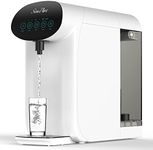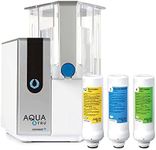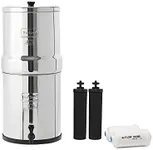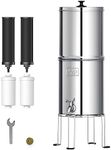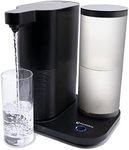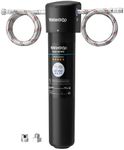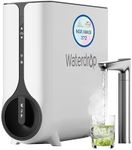Buying Guide for the Best Countertop Water Filters
Choosing a countertop water filter can make a big difference in the taste, safety, and convenience of your drinking water. The right filter for you depends on your water quality, how much water you use, and your kitchen setup. It's important to understand the main features and specifications so you can match a filter to your needs and ensure you get clean, great-tasting water every day.Filtration TechnologyFiltration technology refers to the method the filter uses to clean your water. Common types include activated carbon, ceramic, reverse osmosis, and multi-stage filters. This is important because different technologies remove different contaminants. Activated carbon is good for improving taste and removing chlorine, while reverse osmosis can remove a wider range of impurities, including heavy metals and some bacteria. If your water is already treated and you just want better taste, a simple carbon filter may be enough. If you have concerns about specific contaminants, look for a filter that targets those.
Contaminant RemovalThis spec tells you what types of impurities the filter can remove, such as chlorine, lead, bacteria, pesticides, or microplastics. It's important because not all filters remove the same things. Some are certified to remove only basic chemicals, while others can handle a broader range of contaminants. To pick the right one, consider getting your water tested or checking your local water report to see what you need to filter out, then choose a filter that addresses those specific issues.
Filter CapacityFilter capacity is the amount of water a filter can clean before it needs to be replaced, usually measured in gallons or liters. This matters because it affects how often you'll need to change the filter. Lower-capacity filters (100-300 gallons) need more frequent changes, which can be less convenient for larger households. Higher-capacity filters (over 500 gallons) last longer and are better for families or heavy water users. Think about how much water you use daily to decide what capacity fits your lifestyle.
Flow RateFlow rate is how quickly water comes out of the filter, usually measured in gallons per minute (GPM). A higher flow rate means you get filtered water faster, which is useful if you fill large containers or use the filter for cooking. Lower flow rates can be fine for drinking but may be slow for other uses. If you want convenience and speed, look for a higher flow rate, but remember that some advanced filters may be slower because they remove more contaminants.
Installation and CompatibilityThis refers to how the filter connects to your faucet and whether it fits your kitchen setup. Some filters are easy to attach and remove, while others may need adapters or more permanent installation. It's important because you want a filter that works with your faucet and doesn't take up too much space. If you move often or have a unique faucet, look for a filter with flexible installation options. If you want a more permanent solution, check the compatibility with your current fixtures.
Maintenance and Filter ReplacementMaintenance involves how often you need to change the filter and how easy it is to do so. Some filters have indicators that tell you when to replace them, while others require you to track usage. This is important because regular maintenance ensures your water stays clean. If you prefer low-maintenance options, look for filters with longer-lasting cartridges and easy replacement processes. If you don't mind more frequent changes, you can choose a filter with a shorter lifespan but possibly lower upfront cost.
Size and DesignSize and design refer to the physical dimensions and appearance of the filter. This matters because countertop space is often limited, and you want a filter that fits comfortably without being in the way. Some filters are compact and sleek, while others are larger but may offer more features. Consider your available space and whether you want the filter to blend in with your kitchen decor or if size is less of a concern.
